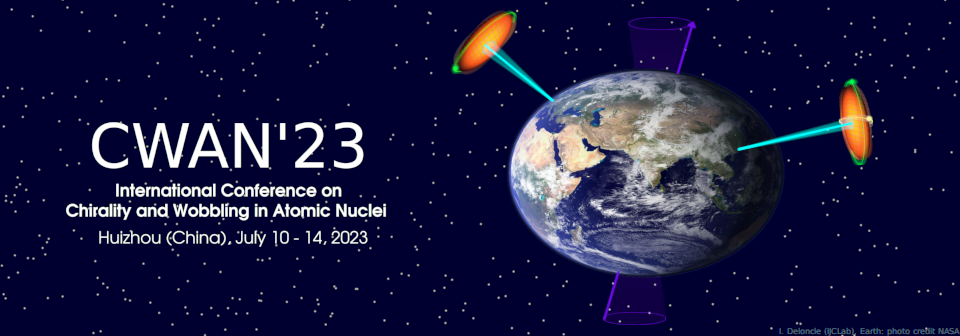Orateur
Description
Nuclei with mass A <120 are perfectly placed to study the shape-driving properties of different quasiparticle configurations. For these nuclei, the Fermi surface for the protons lies close to the low-Ω h11/2 orbitals which drives the nucleus towards prolate shape, while the neutron fermi surface lies near the mid-Ω h$_{11/2}$ orbitals which induces an oblate deformation. Due to the conflicting deformation driving properties, the nuclei observe prolate, oblate or triaxial shape in this mass region. Also, the presence of octupole driving h$_{11/2}$ and d$_{5/2}$ orbitals near the Fermi surface make them suitable to exhibit octupole correlation. In this mass region, octupole correlations have been reported earlier in several isotopes of Xe-Cs-Ba having N < 70. In previous high spin gamma ray spectroscopy measurements in 118Xe nuclei though the octupole correlations have been reported in Refs. but in almost all the cases a precise data on parity assignments, was missing. For example, though the issue of octupole collectivity has been discussed in relation to the observed inter-band transitions, 1022 keV (7$^−$ → 6$^+$), 846 keV (9$^−$ → 8$^+$), 726 keV (11$^−$ → 10$^+$) and 924 keV (8$^−$ → 8$^+$), however, the quoted B(E1) values have errors in the range from 4% to 28%. In the present work, the excited states in 118Xe nucleus were reinvestigated with the aim: 1) to update the level scheme with inclusion of more γ transition in the non-yrast bands (if any), 2) to fix the missing parities with polarisation measurements and 3) to provide a more precise data on the octupole collectivity (transition). We have also performed the triaxial projected shell model (TPSM) calculations to investigate the observed band structures further.
High spin states in $^{118}$Xe have been populated via $^{93}$Nb ($^{28}$Si, xpyn) $^{118}$Xe fusion-evaporation reaction at a beam energy of 115 MeV provided by the 15 UD pelletron accelerator facility at the Inter University Accelerator Center, New Delhi. In the experiment, several new γ-transitions have been found and are placed appropriately in the level scheme. Theoretical study using the triaxial projected shell model (TPSM) approach suggests that the first band-crossing is due to the alignment of two neutrons, and a parallel band tracking the yrast configuration is the γ-band built on the two-quasiparticle state. Enhanced E1 transition rates have been obtained between opposite parity bands, involving νh$_{11/2}$ and νd$_{5/2}$ orbitals having ∆j = ∆l = 3, indicates the presence of octupole correlation in this nucleus. More details of the analysis and the physics outcomes will be discussed during the presentation.

